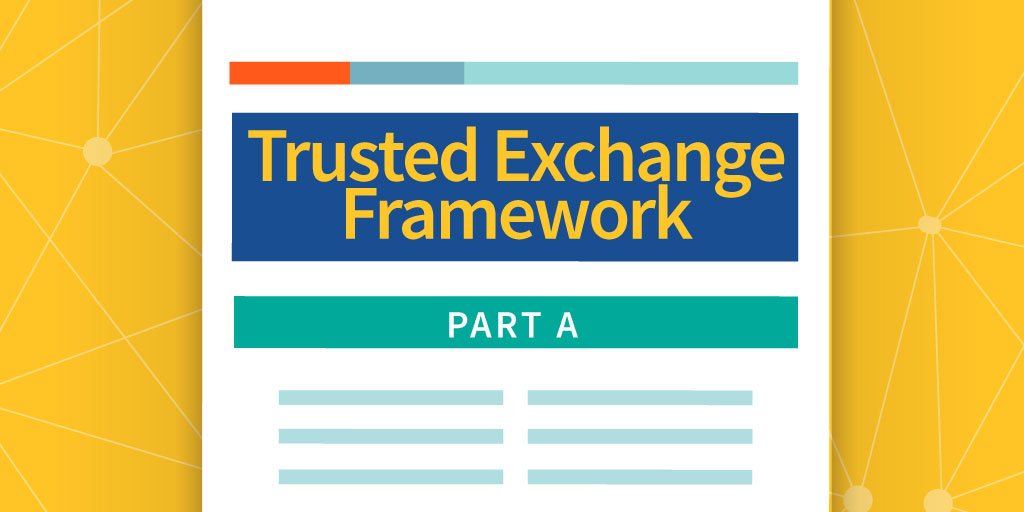More than a year has passed since the Office of the National Coordinator sought comment on its proposed information blocking regulation known as the Trusted Exchange Framework and Common Agreement and now, as the agency releases its second draft of the policy, it has asked for another round of comments.
When congress passed the 21st Century Cures Act, it tasked the ONC with bringing an end to information blocking and creating a framework to promote information sharing and facilitate a scalable, fully interoperable ecosystem for the trusted exchange of health information.
The first draft of TEFCA was heavily focused on the creation of Qualified Health Information Networks (QHIN), or a network of networks so to speak. Basically, existing Health Information Networks (HIN) would all plug into a larger network through which they could share data more easily.
Concerns over the structure of TEFCA highlighted the first round of comments, leading many to wonder what ONC would come back for the second round of the draft agreement. The second draft was released in April and has since received comment from major groups within the industry such the Health Information Management and Systems Society (HIMSS) and The Sequoia Project.
What’s the Feedback?
After the first draft, ONC recognized that it needed to add a few things to the initial release in the form of Minimum Required Terms and Conditions (MRTCs) and a technical framework for QHINs that would broaden the eligibility for organizations to become a QHIN.
The Sequoia Project laid out its response in June, highlighting its support of many aspects of TEFCA while still noting that TEFCA need not disrupt or duplicate existing health information exchanges between participants in health information networks. Currently, they feel TEFCA would cause major disruptions, with one of their biggest concerns being related to the necessary revisions to terms of existing legal agreements. In some cases, legal agreements have been developed over the course of years to support large-scale information sharing and should not be interfered with.
Additionally, the new draft has a narrowed set of exchange purposes. One of the areas that many feel can be addressed by TEFCA is the creation of agreed upon purposes for exchange and use of information. There are concerns that the latest changes will exclude important use cases.
In their response, the Sequoia Project stated that it would like to see “ONC provide definitions for the exchange purposes that explicitly state that case management and care coordination are required exchange purposes.” One area of contention is that the scope of payment and healthcare operations, as defined by HIPAA, should be included as exchange purposes.
HIMSS was also concerned about the focus of exchange purposes and asked that ONC included the payment and healthcare operations so that the industry could continue its push toward value-based care. As ONC has streamlined TEFCA in the early stages, HIMSS is hoping to see the policy positioned in such a way that exchange purposes increase over time.
HIMSS’ feedback was in coalition with PCHAlliance, with the pair of them urging ONC to:
- Align Privacy and Security Obligations to minimize the impact on HIPAA compliant groups as well as their business associates so as to encourage their adoption of TEFCA.
- Clarify QHIN roles and encourage patient focused QHINs
- Relax provisional requirements for QHINs and create a longer process for full adherence to TEFCA for organizations wanting to become QHINs
- Approve more methods of exchange for health information between QHINs
The non-profit healthcare alliance called Direct Trust also submitted feedback and echoed a common refrain for ONC to “build on what is already working in health information exchange.”
To do this, they would like to see a light approach taken in the creation of the MRTCs, and suggests that the proposed central Recognized Coordinating Entity (RCE) work to form coalitions of current health information exchanges and networks to achieve the goals of TEFCA without limiting or assigning what roles these stakeholders are allowed to play.
“While we applaud the goals of TEFCA Draft 2 to advance nationwide healthcare interoperability between existing networks, we advocate for a more agile and iterative approach, which would, appropriately, tie back to the goals of Congress in the 21st Century Cures Act, which includes ensuring that electronic health information will follow the patient for the most fundamental purposes—individual treatment and access—that all stakeholders can agree on,” DirectTrust President and CEO Scott Stuewe said in a statement.




